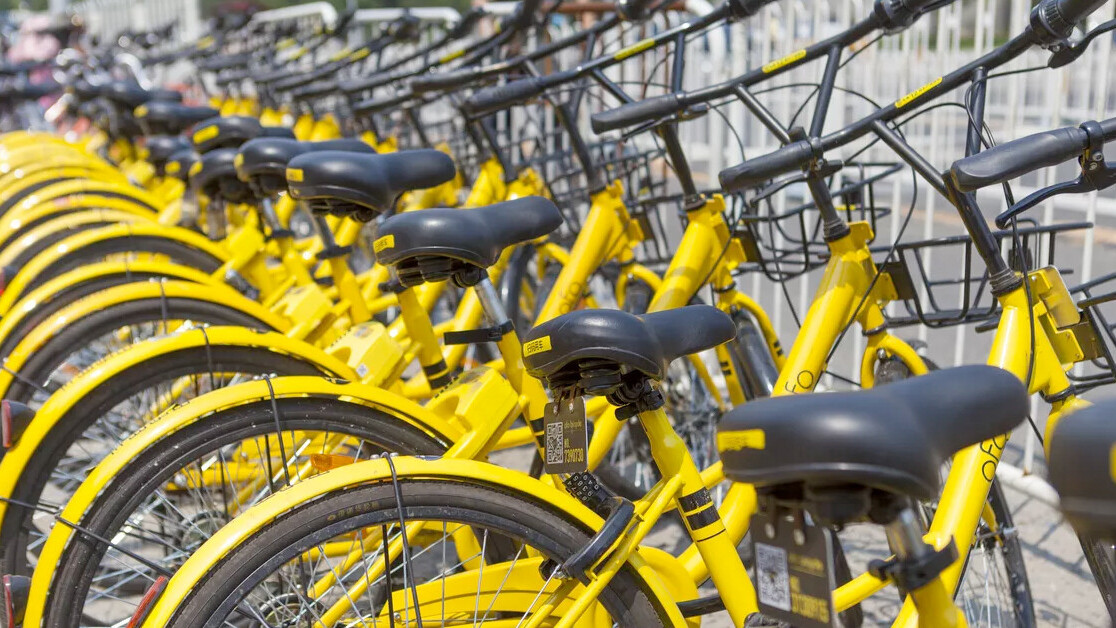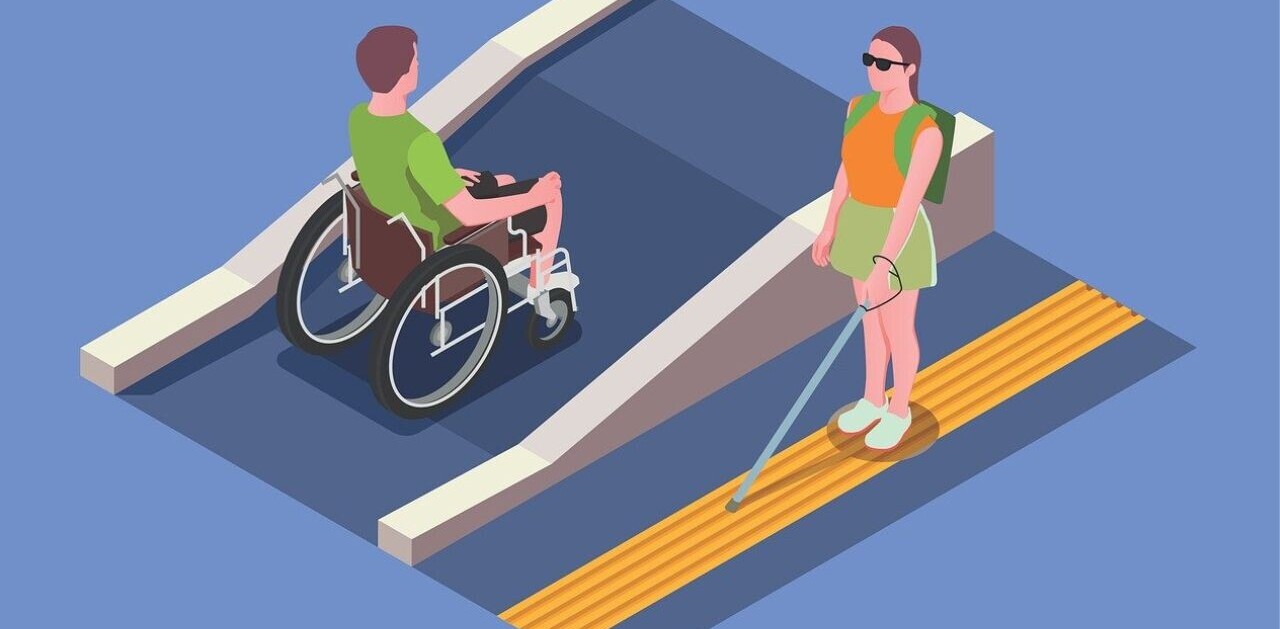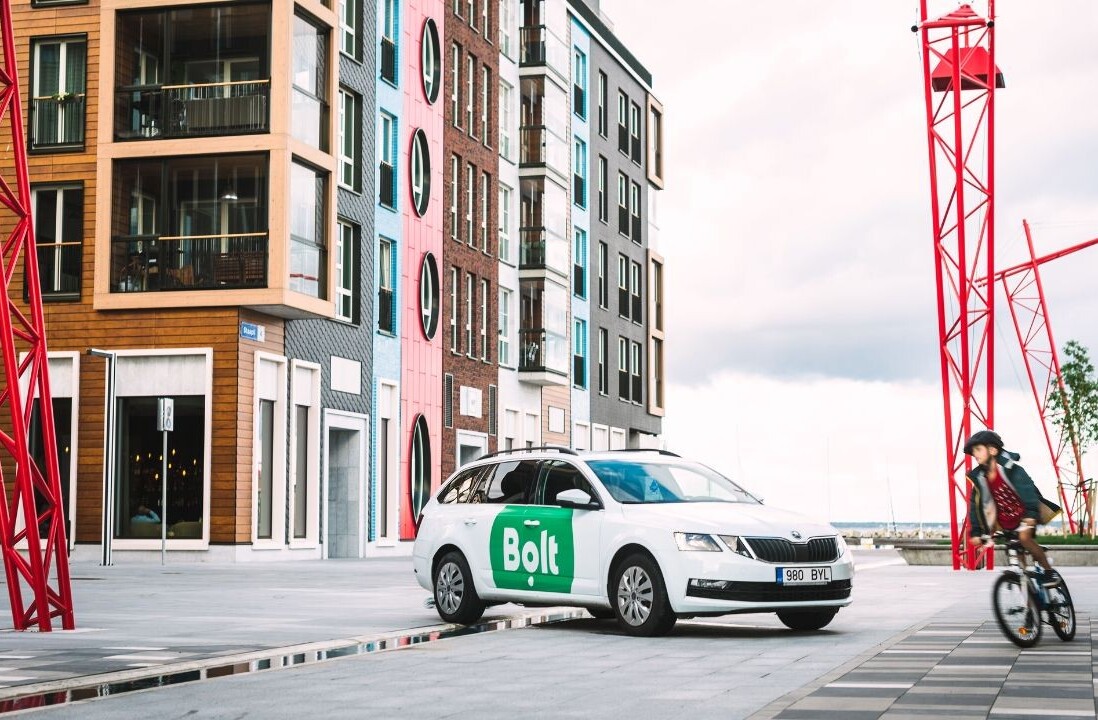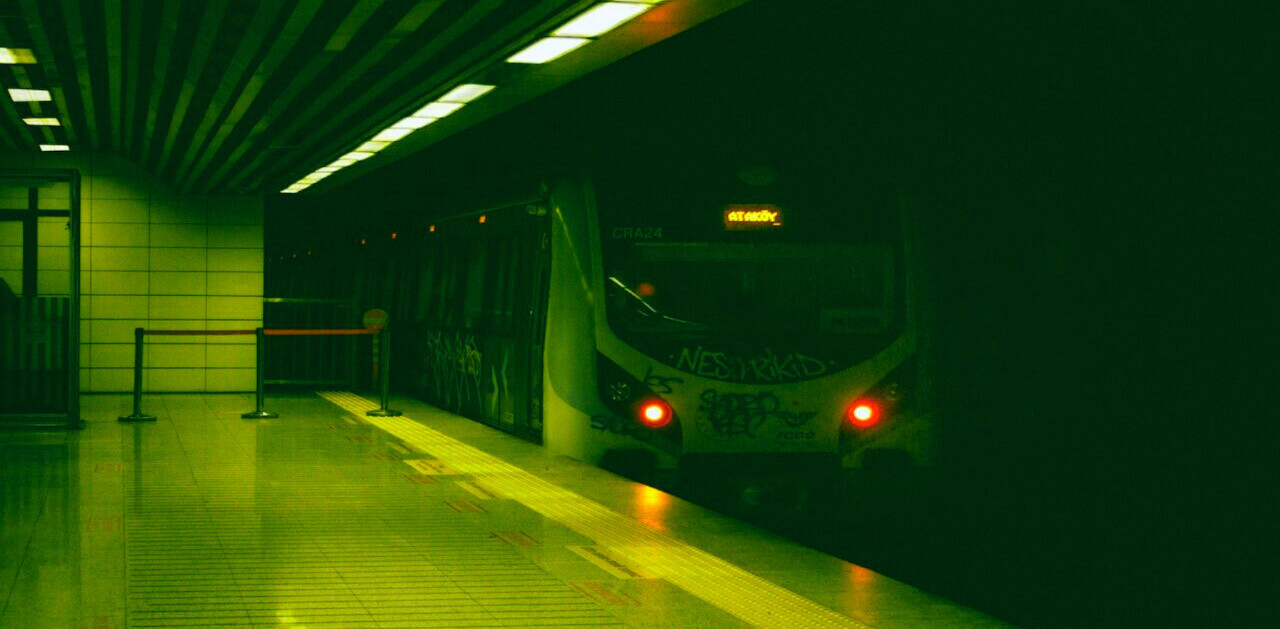This article was written by Venkatesh Gopal, Business Development and Partnerships Manager, Movmi, on The Urban Mobility Daily, the content site of the Urban Mobility Company, a Paris-based company which is moving the business of mobility forward through physical and virtual events and services. Join their community of 10K+ global mobility professionals by signing up for the Urban Mobility Weekly newsletter.
MaaS (Mobility-as-a-Service) is a well-known term in the transportation space today and one of the elements which this commonly relates to is access and not ownership of mobility modes. It could be defined as a packaged service available to the user integrating new/existing shared mobility modes such as bikeshare, scootershare, carshare together with public transit. At movmi, we strongly believe that public transit forms the backbone of MaaS or as we also like to call it “integrated shared mobility.”
The concept of MaaS has been around for a few years now and recently has risen in popularity owing to major projects delivered or being worked upon by cities globally. We’ve seen services provided by Whim in the UK, Belgium , and Finland. Another example of a live MaaS is Jelbi in Berlin, Germany.
Do we infer from such projects that MaaS is just for BIG cities?
Absolutely not! movmi looked at the transportation plans for 20 smaller European and North American cities and municipalities (i.e. those with populations of less than 1/5th of the nearest major city and municipalities) and found compelling facts about how a MaaS or integrated multimodal shared mobility strategy checks most, if not all, of the boxes when it comes to the future of transportation. This article will address the following:
- Why it is important to create and support multimodal transportation for any community and why you need to focus it around the users.
- How MaaS or integrated shared mobility not only solves but also enhances the quality of life in your community and could save large infrastructure expenditures.
- Lastly, technology (in particular a unique APP) need not be the starting point, there are other ways to test the viability of such projects. Regulations can support these “technology-lite” MaaS approaches.
In order to get a holistic understanding of the municipalities, movmi looked at 20 smaller communities located across the UK, Belgium, and Canada and found common themes between them. All reviewed transportation and climate action plans have been released and are based on data before the pandemic.
Overall, these communities on average had population growth forecasts between 20~40% (by year 2031~41). Transit (buses and trains) share-of-trip growth targets are estimated to be 2~3% points from the current (pre-COVID19) levels (around 15%). There is a lot of alignment between the municipalities’ transportation and climate action plans which indicates, not surprisingly, that every community is aiming for sustainable modes to grab a bigger share of the mobility pie.
A common theme was the focus to increase active transportation mode usage and reduce VKT (Vehicle Kilometers Traveled). Both of which not only align with the cities’ objectives of reducing transportation-led GHG emissions but also fit well with improving community health and promoting the ‘vision zero’ agenda.
Starting with the most important stakeholder: the user
In their methodologies, cities engage with the general public from time to time and often have the whiteboard open for comments on certain ideas and/or possible solutions for issues. Overall for most of the municipalities, we noted that the public engagement results clearly indicate the public’s desire to have more choice for urban mobility modes (other than between taking transit and driving their cars) and increasingly a wish towards these choices to be multimodal. If these two options are seen as being the two ends of the transportation spectrum, then the middle ground would be MaaS.
Critical factors that affect users’ choice of public transit could be generalized to be:
- Prolonged commute time and distances between destinations
- Hassle of planning personal schedules around transit’s
- Pain of multiple connections between destinations
Whether big or small, city residents have quite similar feedback when it comes to transit. movmi was part of a transit survey back in 2019 and found resident transit users of the Metro Vancouver area have all the above pain points. When asked about what are the top considerations for the mode of travel, residents answered TIME, CONVENIENCE and COST, and in that order.
Finding the ideal transportation mix for a city isn’t a one-size-fits-all approach. Transit scores great on cost but is not always convenient. Cycling is cost-effective, but not accepted as convenient by a wider demographic and comes with an array of requirements such as secure parking and bike-on-transit arrangements. Car/bike share services are convenient and could be an affordable alternative, but they aren’t available in many cities. In cities that have carsharing, MaaS integration needs mobility hubs to promote multimodal use. Out of the 20 municipalities that we looked at, only four4 had some shared mobility operations available.
These surveys also indicate the public being open to exploring relatively newer mobility modes – car/bike sharing, ride hailing , and even autonomous vehicles (AVs). AVs are clearly a little farther into the future, but the communities that we glanced at have also little in terms of car/bike/scooter sharing. Most of them do have Uber or Lyft services already which have been indicated as one of the choices users would like to see bridge their connections to transit hubs. Currently, demand and therefore pricing isn’t that conducive, but with the ride-pooling option this could be well worth considering.
The promise of on-demand transit
On-demand transit or micro-transit is also a choice that emerges from such public engagement. In our experience, on-demand is a great option (for smaller municipalities) to serve communities with lower demand but are a little farther to be accessed via cycling/walking. Ride-hailing and shared mobility services take pride in creating state-of-the-art user experience through technology and in particular user-friendly mobile APPs. Naturally, thinking about MaaS gets cities to focus on the same and gravitate towards a unified APP. Contrary to this common notion, MaaS need not be centered around the user APP. Depending on the use case, tying multiple modes together could be achieved otherwise too (eg. farecard integration). The focus needs to remain on enabling a smooth intermodal experience.
Apart from these, these public surveys also indicate residents’ preference to be able to save costs to access a vehicle when needed and reduce indirect costs towards transit subsidies. Residents also talk about desiring more accessible (by walk/bike) neighborhoods, increased recreational areas such as parks instead of parking lots , and reduced traffic congestion.
Key word here is ‘integrating’ the different modes so as to create a pull-strategy towards users of one mode to seamlessly use the other. The City of Galway’s (Republic of Ireland) smart mobility strategy talks about creating a universally integrated payment system. This would connect transit ticketing, taxi, bikeshare, even parking, and EV charging station payments. Once implemented such a system would ease multimodal journeys.
Case for MaaS. By integrating shared modes such as carshare, bikeshare or ride-hailing, transit operators can flaunt increased convenience and time over other modes. Along with being aligned with the public needs, integrating such services benefits the city (or transit operator) in cost savings from building transit infrastructure. Integrating bike/scooter sharing services with transit gets rid of costs to plan and build bike infrastructure capacity at different nodes and brings neighborhoods closer to transit hubs. Developing a shared micromobility program (which is then integrated with transit) for the city is one of the potentially inexpensive options to enhance the livability score and work towards a compact community.
Making more with less: Allocating city resources towards an enhanced mobility infrastructure
Planning for growth does not come without capital expenditures. While estimating their forecasts for population growth, the cities need to plan expansion measures and allocate budget for each of these. This is done in two sections, viz.planning services and infrastructure for new ‘future development areas’ and budgeting for maintenance and improvement projects for the existing transportation network available.
Almost every city land use plan talks about a future development area, which is an area specifically allocated to house a large portion of the growing population. Being new, this area needs considerable investments in roads and other transportation related infrastructure. In order to promote sustainable modes of transportation (mostly focused on active modes, biking, and walking), such developments are planned with the ‘dense community’ or ‘compact community’ ideology. This ideology dictates a community with balanced residential and commercial zones where residents could have a self-contained lifestyle reducing the urge to travel longer distances typically from a city’s suburbs to downtown.
Case in point, the Dundee City (Scotland, UK) plans to drive the 15-minute-city strategy. Based on access to emergency health services to be reachable by walk or bike or bus within that time window without the need to rely on a private vehicle (and this is before a pandemic actually hit the world). The city then repeated the approach to cover access to shopping centers and recreational activities. The City of Markham (Canada) plans to accommodate 50~60 jobs per hectare which means it needs transit and active transportation accessibility. Such plans also allow not just for affordable housing plans but also provide affordable mobility options to its residents. Sounds encouraging, but extending transit services even if it’s about increasing the number of services, new roads and bike infrastructure demand huge capital expenditure.
Cities’ challenges in responding to a growing demand
Planning for maintenance and improvement of existing infrastructure comprises two major cost items, viz. capacity expansion and/or new transit network and increasing capacity and/or building new road infrastructure. In the plans that we reviewed, these two items take up close to 75~90% of the total transportation capital budget. Capacity expansion requires investment in additional shuttles, increased services and planning. Commissioning network expansion projects demands major construction costs in addition to planning. With the average transit trip-share hovering around 15%, it is challenging for cities to serve the demand growth (centered around population forecasts) based on transit expansion alone.
Active transportation infrastructure might not be a big cost item, but it is not equitable to all demographics and has limited capacity. Expenditures towards supporting road traffic forms a major portion too. Cities need to allocate land use for parking lots, curbside parking, and plan intersections. Overall such investments in an infrastructure that is not very efficient in handling the growing demand (individual car ownership) result in lower ROIs.
Combining both new and existing infrastructure projects, we noticed the certain cities’ budget allocations do not align with the overall sustainability strategy. For instance, the Region of Waterloo (Canada) has allotted just over 50% of the budget to road infrastructure, 40% to transit projects and a mere 10% to active transportation modes despite the overarching objective of the strategy was to build a healthier community centered around improved air quality and active transportation. Not to mention, certain cities (owing to past estimates gone wrong) have budgeted for ‘road-diets’. These are projects to remove 1~2 lanes from some of the ‘overbuilt’ corridors.
Case for MaaS. The objective of MaaS (integrated shared mobility) is mode shift. Its seamless multimodal options will help reduce friction for users to connect between modes (transit, carshare and bikeshare). Conventionally cities are split between budgeting towards parking infrastructure, road widening, and transit expansion (which includes fleet acquisition & maintenance, garage, incremental payroll, and planning costs). MaaS allows an efficient use of existing infrastructure e.g. a carshare vehicle replaces 4~13 personally owned ones which are otherwise idly parked 95% of the time. Integrating shared mobility and public transit helps cities focus towards aligning their budgets more efficiently to sustainable growth.
Physical integration into mobility hubs needs regulatory changes
Many smaller cities tend to have limited regulations related to a shared mobility program. Carsharing has been around for more than two decades in Canada, but we still see many cities not having services available to their residents. Ride-hailing is more well spread out and in many regions is complemented by transit-on-demand services available on the platform. Bike and scooter share bylaws have been dealt with a little caution owing to the infamous ‘sidewalk-littering’ image from dockless sharing services in leading cities.
It is encouraging to find in some of the transportation plans that we looked at, there were strategies linked to defining bylaws to include a car/bike share program. For cities that already house such services, they often talk about zoning bylaws amendments for shared mobility using ‘lessons-learnt’ which is an ideal approach to have. With the plan to repurpose city-center land-use from parking to other community-enhancing areas, cities have committed plans to reduce parking (on & off-street), support that with an increase in parking related fees, and add shared mobility zones in an effort to incentivize the multimodal choice and simultaneously reduce traffic congestion in city-centers. One of the plans has an innovative approach to explore the possibility of sharing parking spaces between multiple facilities where demand is staggered during different times of the day.
Bigger cities leading (so far) in MaaS implementation such as Antwerp, Berlin, and Helsinki have set a precedence in what critical policies need to be integrated for the system to work. We notice cities such as Aberdeen, Galway, and Cork have an innovative carrot-stick approach to creating favorable policies for implementing a multimodal strategy. Ranging from restricting private vehicles from accessing a major connector bridge (Salmon Wier bridge, Galway) right in the middle of the city to enforcing stricter city-center parking regulations for private vehicles, clearly, the strategy is to relieve congestion. How about maintaining transportation equity? Well, these restrictions must always go hand-in-hand with providing suitable alternatives. On-demand shuttle services, allocating parking spaces for car sharing, and investing in bike infrastructure, thus favoring bike, scootersharing operations need to be implemented and integrated to the overall transportation system.
Case for MaaS. One of the stepping stones for MaaS is the collocation of shared mobility services and public transit. In this case cities merely have to amend regulations in order to bring existing shared mobility closer together to form mobility hubs around transit locations. This could act as a learning experiment for initiating a wider integrated shared mobility strategy. For others, creating a program favoring shared mobility services and imposing some sort of a ‘convenience’ fee for parking individual cars will help shift people away from an individual car-ownership lifestyle.
In conclusion: towards a holistic MaaS
A transportation master plan depicts the future of mobility for any city or municipality. Looking at the plans for these 20 municipalities, we certainly agree and find the direction encouraging for MaaS (integrated shared mobility). MaaS, if thought of holistically, can frame and solve the problems of:
- the users by making journeys more seamless without using their personal vehicles
- the city by efficiently allocating its resources
- the city in implementing regulatory changes needed to create the physical infrastructure to support seamless travels
Starting a city-wide MaaS program is a little complex, but unlike the common belief, it need not start with (and hence pivot around) a unified mobile APP. Getting the basics right is vital, no matter the size of the city. That way cities may grow a tailor-made solution that their community actually needs. Shared mobility operators face certain challenges which even affects overall user acceptance of such a system.
SHIFT is brought to you by Polestar. It’s time to accelerate the shift to sustainable mobility. That is why Polestar combines electric driving with cutting-edge design and thrilling performance. Find out how.
Get the TNW newsletter
Get the most important tech news in your inbox each week.









